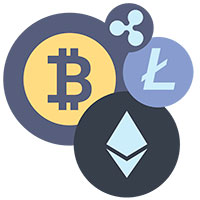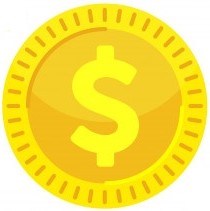The USD/JPY pair ended the second quarter of 2023 close to its November highs at around 144.00. Same as at the end of last year, the stark contrast between the monetary policies of the Bank of Japan and the Federal Reserve was the main factor weighing down on the Japanese yen, reducing to nothing any bearish attempts to push the pair lower.
Market participants are still pondering the outcome of the Bank of Japan’s June meeting. As expected, the central bank left its interest rate unchanged at -0.10% and made no changes to its yield curve control (YCC) policy, which allows the BOJ to conduct unlimited interventions (bond purchases) in order to keep the 10-year government bond yield at 0.5% above or below zero.
Speaking at a press conference, Bank of Japan Governor Kazuo Ueda noted that inflation in the country is not high enough to revise the current ultra-loose monetary policy. Let’s recall that Japan’s annual inflation rate stood at 3.2% in May and continues to decline. It is worth noting that wholesale inflation has been slowing for a few consecutive months now, and this downward trend confirms the bank’s projections that Japan’s core consumer inflation could reach the 2% target toward the latter half of the current fiscal year. In fact, that’s how the regulator justifies its dovish stance and apparent unwillingness to abandon its ultra-easy policy, which continues to put pressure on the yen.
While the Japanese regulator is doing everything in its power to avoid monetary policy tightening, other world central banks, on the contrary, are forced to continuously raise their key rates to tackle rampant inflation. By comparison, Japan’s core inflation (excluding food and energy prices) is currently 3.2%, while the core CPI rate in the US stands at 5.3%.
Considering that the issue of high inflation in Japan is not as pressing as in the US, the BOJ monetary policy significantly diverges from that of the Federal Reserve. It’s important to note that the key interest rate in the US stands at 5.25%, 52 times higher than in Japan. This gap between the two policies will only widen in the future, creating conditions for further yen depreciation.
Despite the above, the yen’s weakening cannot continue forever since it negatively affects imports and consumer activity. We shouldn’t forget that wages in Japan don’t grow as fast as the prices for imported goods. Last year, the 145.00 level was the tolerance threshold for the Japanese regulator. In September 2022, after the USD/JPY pair reached this mark, the Bank of Japan intervened for the first time in 24 years, spending more than $42 billion to stop the yen slide. The situation may repeat itself, given that the pair’s exchange rate is critically close to the specified mark. Considering this, the path of least resistance for the USD/JPY pair is now up. However, if the price enters the 145.00-146.00 range, taking short positions with the target of 135.00 would be appropriate.
BRENT: How high can oil prices go?
According to the results of Q2 2023, Brent crude oil managed to settle in the $75 a barrel range. Over the past three months, sellers have made three attempts to push the price below $70. But each time, they saw that OPEC+ countries were not interested in cheap oil and wouldn’t simply let the quotes sink lower.
A few weeks ago, OPEC+ countries agreed to extend earlier cuts in supply through the end of 2024. The overall production level will be adjusted to 40.46 million barrels a day, 1.4 million barrels less than the current level. On top of that, Saudi Arabia announced an additional voluntary cut of 1 million barrels of oil per day starting July. Russia will reduce its oil output by 650,000 barrels per day in 2024. According to a decision passed at the OPEC+ meeting, Russia’s quota was set at 9.8 barrels a day. However, a spokesman for Russian Deputy Prime Minister Alexander Novak confirmed that this figure does not include Russia’s voluntary production cuts, so the actual daily output in 2024 will be 9.3 million barrels. The OPEC statement noted that this decision aimed to support the “stability and balance of oil markets.” Be that as it may, once these cuts are implemented, the world oil market will be short of 3.5 million barrels per day.
Meanwhile, the International Energy Agency (IEA) revised its oil outlook. The latest report from the IEA suggests that world oil demand this year will rise by 2.45 million barrels per day versus the previous estimate of 2.20 million barrels to a record 102.3 million barrels per day. The demand growth will be supported by China’s robust economic recovery after the country abandoned its Covid restrictions. In April alone, China’s energy consumption reached a record 16 million barrels a day.
Chart 4. World oil supply and demand, short-term outlook. The red line shows the change in demand, the yellow line indicates supply. Source: IEA.
It’s worth noting that while oil demand continues to grow, oil supply will remain tight. Chart 4 shows that in the second quarter of 2023, global oil production decreased by more than 600 thousand barrels per day to 100.6 million barrels, while demand rose to 101.5. That means there’s already a supply deficit in the global oil market. If this trend continues into the third quarter, it will only exacerbate the supply issue, creating perfect conditions for the growth of oil prices.
DXY: the bottom is still ahead
The second quarter of 2023 was controversial for the US dollar index (DXY). In May, the instrument hit its local high at 104.60. After that, the sellers took over, pushing the dollar to the 102.50-103.00 area, which corresponds to the beginning of the quarter levels. If in April-May bullish sentiment was fueled by speculations about the inevitability of more rate hikes and the “infinity” of the current tightening cycle, in June, the Fed significantly changed its rhetoric, exerting strong selling pressure on the US dollar. After 10 consecutive rate hikes, the Federal Reserve kept its interest rates unchanged at 5.25%. In an accompanying statement, the Fed explained that holding the target range steady will allow the regulator to “assess additional information and its implications for monetary policy.”
The bank’s management was probably simply impressed with the progress as US consumer price increases slowed. Let’s recall that annual inflation in the United States cooled from 4.9% to 4% in May, the lowest level since March 2021. The core consumer price index, which does not include food and energy prices, also showed a downtrend easing from 5.5% to 5.3%. We believe that it was the steady decline in inflation that made the Federal Reserve take a wait-and-see attitude and keep the rate unchanged. At the same time, the Fed admitted that it is still concerned about elevated inflation and therefore is ready to resume tightening if the situation requires.
After the meeting, the Fed also released updated economic forecasts in its Summary of Economic Projections (SEP), including its “dot plot,” which shows policymakers’ rate hike expectations in the future. Fed officials now see the Fed funds rate peaking at 5.6% this year, higher than the Fed’s previous March projection of 5.1%. For the end of 2024, the outlook for rates was revised up to 4.6% from 4.3% in March. According to these projections, the Fed may allow for two more 25 basis point rate hikes this year and a 100 basis point rate cut in 2024. Market participants are confident that the Fed’s further actions will largely depend on macroeconomic data. If reports continue to show more and more signs that the US economy is heading into recession, the Fed will be forced to end the current tightening cycle.
In addition to a steady disinflationary process in the US, the weak labor market is another factor that could prevent the Fed from further rate increases. According to the latest nonfarm payrolls report, the US unemployment rate rose to 3.7% in May, which is quite logical, given that the business activity indexes in the manufacturing and services sectors entered contraction territory, according to the ISM.
We believe the Fed will go for a final rate hike in July, but we don’t see the need for a second rate hike later this year. The Fed may signal that the policy tightening has been carried out to a sufficient extent either at the Jackson Hole symposium at the end of the summer or at the September FOMC meeting. Thus, the bullish rally in the US dollar will be short-lived unless some unexpectedly strong data on business activity, the labor market and inflation are released in the coming months. If not, the DXY is in for another quarter of a consecutive decline.
GBP/USD: a surprising move from the Bank of England
The GBP/USD pair ended the second quarter of 2023 in the 1.2700 area. From April to June, the pound recovered by 400 points, showing some of the most outstanding results in the foreign exchange market. In addition to the general factors that had contributed to the growth of all risky assets (weakness of the US dollar, improving market sentiment), the pound was supported by high inflation, which continued to put pressure on the British regulator, forcing it to maintain a more ‘aggressive’ approach to rate increases. As a result, the Bank of England raised interest rates for the thirteenth consecutive time in June from 4.5% to 5%. Despite market expectations, the rate was increased by 50 basis points in one go, which suggests that the BOE management has entered a panic mode, fearing to lose control of inflation.
Speaking to a parliament committee three weeks ago, Bank of England Governor Andrew Bailey admitted that it was taking “a lot longer than expected” to bring down inflation, and therefore every reasonable measure was on the table for possible action by the regulator to stabilize the consumer price index and return inflation to the 2% target. These comments were made after the release of April data on the UK labor market, according to which average wages (excluding bonuses) rose by 7.2%, up from 6.8%.
Let’s recall that higher wages are the main driver of inflationary pressure in the UK. After that, inflation data were released, convincing traders that the Bank of England would be forced to continue raising interest rates to fight it. According to the Office for National Statistics, the consumer price index rose by an annual 8.7% in May, while the core consumer price index (excluding food and energy prices) rose by an annual 7.1%, up from 6.8% in April. It is worth noting that consumer price inflation in the UK is still one of the highest compared to other advanced economies.
Despite a significant increase in core inflation, however, the chances of a 50 bps rate hike in June were low, given the consequences of higher borrowing costs for the UK economy. Instead, traders expected the Bank of England to support the idea of multiple 25-basis-point rate hikes throughout the year. Instead, the central bank went ‘all in,’ surprising markets with a 50 basis point rate increase. In an accompanying statement, the regulator made it clear that persistently high inflation will require further tightening until the end of this year. Now market participants expect rate hikes in July and September.
Currently, the Bank of England is facing a serious dilemma: to fight inflation or stimulate economic growth. Despite the elevated risks of recession, the central bank will most likely focus on taming inflation as its first priority. Of course, raising the rates at the current pace would have an extremely detrimental impact on the economy. Households will continue to struggle with soaring mortgage costs while rising business insolvencies will force companies to cut spending by laying off employees. However, the consequences of persistently high inflation may be more significant. The Bank of England is aware of all this, trying to set its priorities correctly, especially considering that stimulating the economy when inflation has almost reached a double digit can hardly be called an effective strategy.
Economists surveyed by Bloomberg are convinced that the UK rate could peak at 6%, making UK government bonds more attractive. Even now, the yield on the 2-year and 10-year treasury notes is at its highest since the 2008 financial crisis. Since the attractiveness of the UK debt market will only increase against the backdrop of the BoE policy tightening, the pound has every chance to revisit local highs and test the resistance of 1.3000.

















